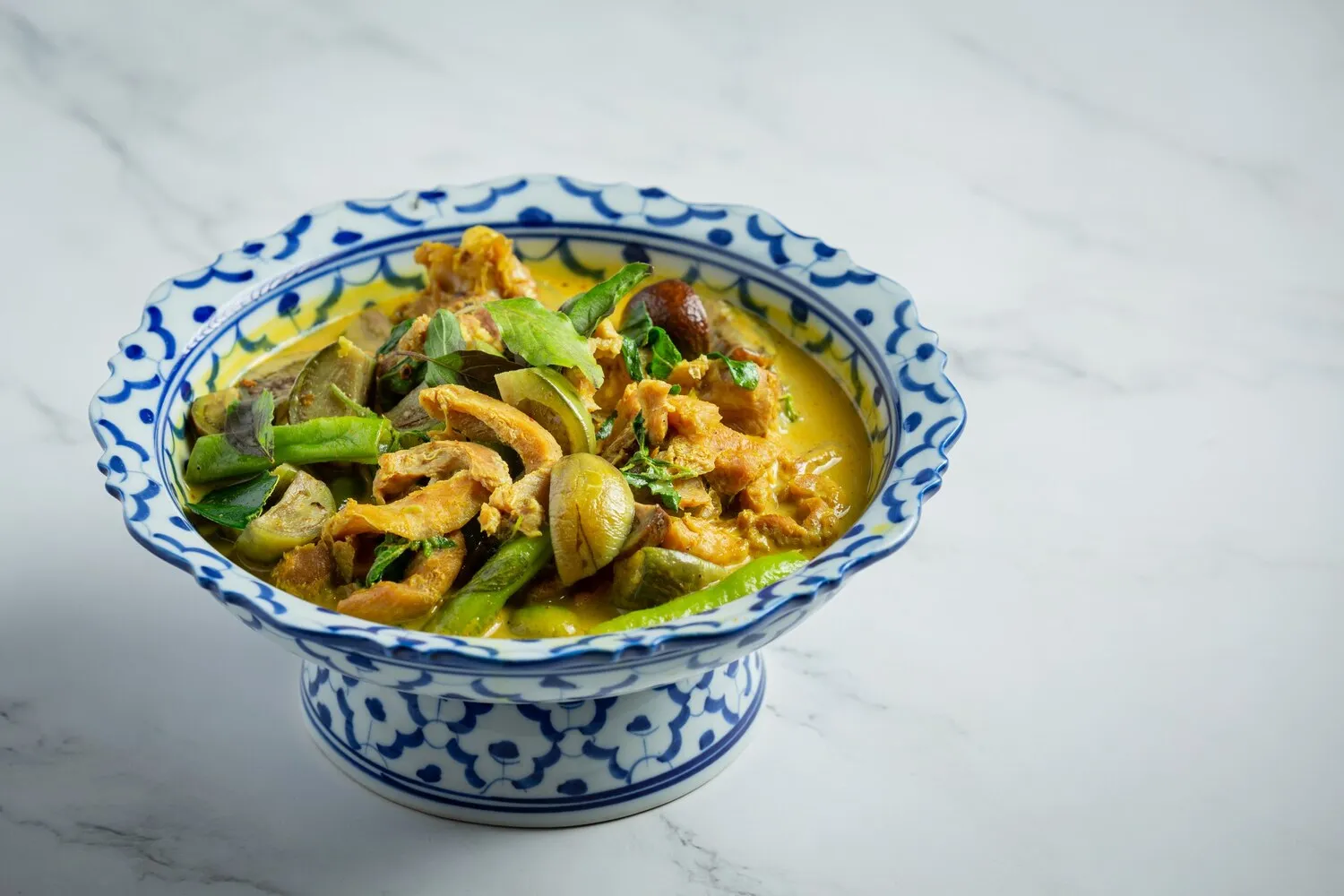
Chicken Curry
Chicken cooked in a curry sauce.
Nutrition Facts
* The % Daily Value (DV) tells you how much a nutrient in a serving of food contributes to a daily diet. 2,000 calories a day is used for general nutrition advice.
Richmond Oriental
Chicken curry's history is deeply intertwined with the culinary heritage of the Indian subcontinent, evolving over centuries through the fusion of indigenous cooking techniques and ingredients with those introduced by foreign traders and rulers, particularly the Mughals and the British. The use of spices, a cornerstone of Indian cuisine, dates back thousands of years, while the introduction of ingredients like tomatoes and chili peppers, initially from the Americas, significantly influenced the dish's development.
Chicken curry holds significant cultural importance in India and throughout the Indian diaspora. It's more than just a meal; it's a symbol of hospitality, celebration, and family togetherness.
Celebratory Dish
Chicken curry is frequently prepared for special occasions, festivals, and family gatherings. It represents abundance and is often served as a central dish in a larger meal.
Regional Variations
The diversity of chicken curry recipes across India reflects the unique culinary traditions of each region. From the fiery vindaloo of Goa to the creamy butter chicken of Delhi, each variation tells a story about the local ingredients and cultural preferences.
Home Cooking Staple
Chicken curry is a staple in many Indian homes, passed down through generations. Each family often has its own unique recipe and method for preparing the dish, contributing to its rich tapestry of flavors and variations.
Chicken curry offers a complex and aromatic flavor profile, characterized by a harmonious blend of savory, spicy, and sometimes sweet or tangy notes. The specific flavor profile depends heavily on the regional variation and the blend of spices used.
The dominant flavors include the richness of browned onions, the warmth of ginger and garlic, the heat of chili peppers (fresh or powdered), and the aromatic complexity of spices like turmeric, cumin, coriander, cardamom, cloves, cinnamon, and garam masala. Tomatoes provide acidity and depth, while yogurt or coconut milk can add creaminess and a subtle sweetness. Lemon or lime juice often brightens the dish with a touch of tanginess. The chicken itself absorbs these flavors during the cooking process, resulting in a tender and flavorful protein at the heart of the curry.
Spice Blend is Key
Experiment with different spice combinations to find your preferred flavor profile. Roasting whole spices before grinding can enhance their aroma and flavor.
Browning the Onions
Patience is key when browning the onions. Cook them slowly over medium heat until they are a deep golden brown, as this adds sweetness and depth to the curry.
Marinating the Chicken
Marinating the chicken in yogurt, lemon juice, and spices for at least 30 minutes (or even overnight) will tenderize the meat and allow it to absorb more flavor.
Salt and Heat
Adjust salt and spice to your tastes. Add chilli to taste. Many recipes are passed down without the specifics of heat. So add to taste based on heat index of the chilli.
Explore additional Curry dishes and restaurants
Explore CurryDiscover top dining spots and culinary experiences in East Kilbride.
Explore East KilbrideLearn more about the food culture, restaurant scene, and culinary heritage of Scotland.
Explore Scotland